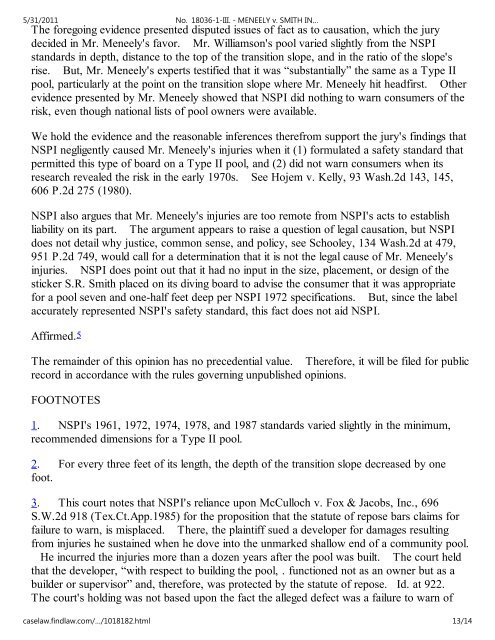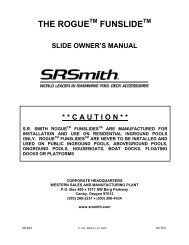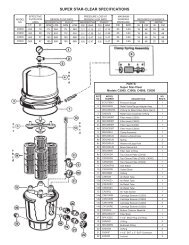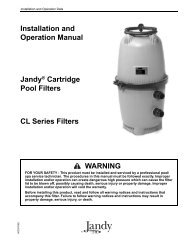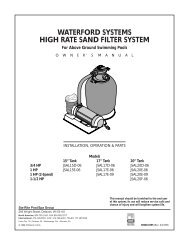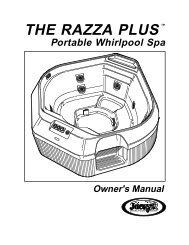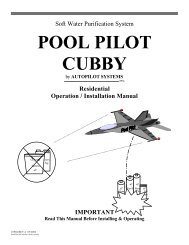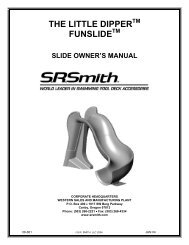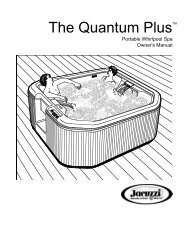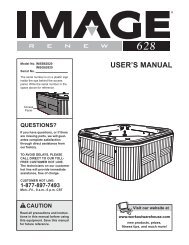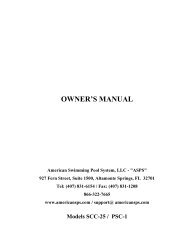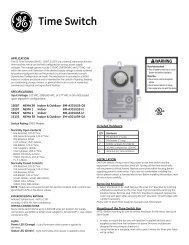Meneely v Smith - Rick English - Swimming Pool Consultant
Meneely v Smith - Rick English - Swimming Pool Consultant
Meneely v Smith - Rick English - Swimming Pool Consultant
Create successful ePaper yourself
Turn your PDF publications into a flip-book with our unique Google optimized e-Paper software.
5/31/2011 No. 18036-1-III. - MENEELY v. SMITH IN…The foregoing evidence presented disputed issues of fact as to causation, which the jurydecided in Mr. <strong>Meneely</strong>'s favor. Mr. Williamson's pool varied slightly from the NSPIstandards in depth, distance to the top of the transition slope, and in the ratio of the slope'srise. But, Mr. <strong>Meneely</strong>'s experts testified that it was “substantially” the same as a Type IIpool, particularly at the point on the transition slope where Mr. <strong>Meneely</strong> hit headfirst. Otherevidence presented by Mr. <strong>Meneely</strong> showed that NSPI did nothing to warn consumers of therisk, even though national lists of pool owners were available.We hold the evidence and the reasonable inferences therefrom support the jury's findings thatNSPI negligently caused Mr. <strong>Meneely</strong>'s injuries when it (1) formulated a safety standard thatpermitted this type of board on a Type II pool, and (2) did not warn consumers when itsresearch revealed the risk in the early 1970s. See Hojem v. Kelly, 93 Wash.2d 143, 145,606 P.2d 275 (1980).NSPI also argues that Mr. <strong>Meneely</strong>'s injuries are too remote from NSPI's acts to establishliability on its part. The argument appears to raise a question of legal causation, but NSPIdoes not detail why justice, common sense, and policy, see Schooley, 134 Wash.2d at 479,951 P.2d 749, would call for a determination that it is not the legal cause of Mr. <strong>Meneely</strong>'sinjuries. NSPI does point out that it had no input in the size, placement, or design of thesticker S.R. <strong>Smith</strong> placed on its diving board to advise the consumer that it was appropriatefor a pool seven and one-half feet deep per NSPI 1972 specifications. But, since the labelaccurately represented NSPI's safety standard, this fact does not aid NSPI.Affirmed.5The remainder of this opinion has no precedential value. Therefore, it will be filed for publicrecord in accordance with the rules governing unpublished opinions.FOOTNOTES1. NSPI's 1961, 1972, 1974, 1978, and 1987 standards varied slightly in the minimum,recommended dimensions for a Type II pool.2. For every three feet of its length, the depth of the transition slope decreased by onefoot.3. This court notes that NSPI's reliance upon McCulloch v. Fox & Jacobs, Inc., 696S.W.2d 918 (Tex.Ct.App.1985) for the proposition that the statute of repose bars claims forfailure to warn, is misplaced. There, the plaintiff sued a developer for damages resultingfrom injuries he sustained when he dove into the unmarked shallow end of a community pool.He incurred the injuries more than a dozen years after the pool was built. The court heldthat the developer, “with respect to building the pool, ․ functioned not as an owner but as abuilder or supervisor” and, therefore, was protected by the statute of repose. Id. at 922.The court's holding was not based upon the fact the alleged defect was a failure to warn ofcaselaw.findlaw.com/…/1018182.html 13/14


